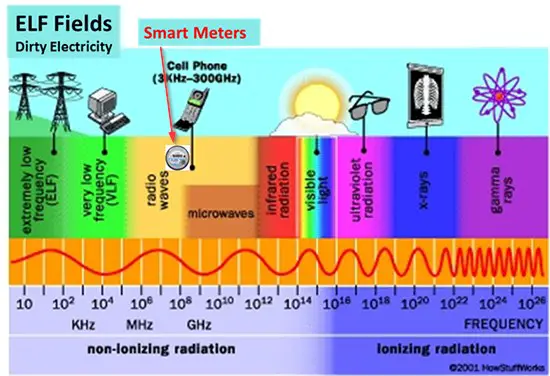The silver standard, a monetary system where the value of a country’s currency is directly linked to a specific amount of silver, offers several advantages. Firstly, it provides stability to the economy by preventing inflationary pressures since the money supply is tied to the available silver reserves. Secondly, silver has intrinsic value due to its various industrial and ornamental uses, making the currency more reliable and resilient in times of economic uncertainty. Thirdly, the silver standard encourages responsible fiscal policies as governments cannot simply print more money without corresponding increases in silver reserves, promoting financial discipline. On the downside, the silver standard poses significant challenges. One major drawback is the limited supply of silver, which can hinder economic growth as the money supply cannot expand freely to meet the demands of a growing economy. Additionally, fluctuations in silver prices can lead to unstable currency values, causing uncertainties in international trade. Moreover, countries heavily reliant on silver mining might experience economic volatility due to fluctuations in global silver prices. Lastly, the transition from a silver standard to other monetary systems can be complex and disruptive, impacting economic stability during the shift.
Advantages of Silver Standard
The global economic landscape has witnessed a myriad of changes throughout history, and the role of precious metals in shaping financial systems cannot be overstated. Among these metals, silver has held a unique position, often seen as both an investment and an industrial commodity. In recent times, the concept of a “Silver Standard” has gained traction, offering a distinctive approach to monetary systems. In this article, we delve into the top advantages of the Silver Standard, exploring its potential benefits for economies and investors alike.
1. Stability in Times of Economic Uncertainty
One of the primary advantages of adopting a Silver Standard is the stability it can bring to the monetary system. Silver has a long history of being a store of value, and its intrinsic value tends to be more stable than fiat currencies, which can be susceptible to inflation and economic fluctuations. In times of economic uncertainty, a Silver Standard can provide a reliable anchor, fostering confidence among businesses and consumers.
2. Hedge Against Inflation
Inflation has been a persistent concern for many economies, eroding the purchasing power of their currencies. Silver has often served as a hedge against inflation due to its intrinsic value and limited supply. By pegging a currency to silver, a nation can mitigate the impact of inflation, providing its citizens with a more robust and stable medium of exchange.
3. Industrial Versatility
Silver’s applications extend beyond its role as a monetary metal. It is a crucial component in various industrial processes, including electronics, solar panels, and medical equipment. A Silver Standard not only stabilizes the currency but also ensures a consistent and reliable supply of silver for industries. This dual-purpose nature makes silver-backed currencies uniquely positioned to support economic growth and industrial development.
4. Diversification of Reserves
Countries often diversify their foreign exchange reserves to minimize risks associated with currency fluctuations. Introducing a Silver Standard allows nations to diversify their reserves further, reducing dependency on a single currency. This diversification can enhance a country’s resilience to global economic shocks and geopolitical uncertainties.
5. Inherent Intrinsic Value
Unlike fiat currencies that derive their value from government declarations, silver possesses intrinsic value. This tangible value is grounded in its scarcity, utility, and demand. A Silver Standard anchors a currency to a commodity with real and enduring worth, fostering trust and confidence in the monetary system.
6. Long-Term Price Appreciation
Historically, silver has demonstrated long-term price appreciation. By pegging a currency to silver, nations can potentially benefit from the metal’s value growth over time. This appreciation can have positive effects on the overall wealth and economic stability of a country, providing a solid foundation for sustainable development.
7. Protection Against Currency Manipulation
Currency manipulation has been a concern in the global economic arena. By adopting a Silver Standard, a nation can reduce the risk of currency manipulation, as the value of the currency is tied to the value of silver rather than being subject to arbitrary decisions by central authorities.
8. Environmental Sustainability
The growing emphasis on environmental sustainability has increased the demand for green investments. Silver, a key component in solar panels and other green technologies, aligns with this trend. A Silver Standard positions a country as environmentally conscious, attracting investors and contributing to the global shift towards sustainable practices.
The Silver Standard presents a compelling alternative to traditional monetary systems, offering stability, intrinsic value, and diversified economic advantages. While challenges and considerations exist, exploring the adoption of a Silver Standard could pave the way for a more resilient and sustainable financial future. As the world grapples with economic uncertainties, it may be time to reconsider the role of silver in shaping the monetary landscape.
Disadvantages of Silver Standard
The history of monetary systems has witnessed various standards, and among them, the Silver Standard has held a significant place. While it played a crucial role in shaping economies in the past, it is essential to critically examine its disadvantages in the context of contemporary economic landscapes. This article aims to delve into the drawbacks of the Silver Standard, exploring its impact on economic stability, trade, and overall financial systems.
1. Historical Overview of the Silver Standard
To understand the disadvantages, it is crucial to first trace the historical evolution of the Silver Standard. Dating back to ancient civilizations, silver has been used as a form of currency due to its durability and scarcity. The Silver Standard gained prominence in the 19th century when many countries, including the United States, adopted a bimetallic system, linking their currencies to both silver and gold.
2. Price Volatility and Economic Stability
One of the major drawbacks of the Silver Standard lies in its susceptibility to price volatility. Unlike gold, silver has a higher price sensitivity to changes in supply and demand. This volatility can lead to erratic fluctuations in currency values, posing challenges to economic stability. The article will explore historical instances where countries faced economic crises due to silver price fluctuations, affecting industries, employment, and overall growth.
3. Inflationary Pressures and Monetary Policy
The Silver Standard’s impact on inflation is a critical aspect that warrants examination. Silver production is subject to variations influenced by factors such as mining discoveries and technological advancements. These fluctuations can lead to inflationary pressures, complicating the formulation and execution of effective monetary policies. The article will analyze how inflationary tendencies under the Silver Standard can hinder central banks’ ability to maintain price stability and sustainable economic growth.
4. International Trade and Exchange Rates
The relationship between the Silver Standard and international trade will be explored in this section. The disparity in silver-to-gold ratios among countries can result in exchange rate uncertainties, affecting trade balances. The article will discuss historical cases where countries experienced trade imbalances and currency crises due to misalignments in silver values. Additionally, the impact of the Gold Standard’s ascendancy over the Silver Standard on global trade dynamics will be examined.
5. Limited Monetary Policy Flexibility
Compared to fiat currencies, a silver-based monetary system limits policymakers’ flexibility in responding to economic challenges. The article will discuss how the Silver Standard constrains central banks in implementing monetary policies tailored to address specific economic conditions. This lack of flexibility can exacerbate economic downturns and hinder recovery efforts, as demonstrated by historical examples.
6. Transition Challenges and Economic Disruptions
Shifting from the Silver Standard to another monetary system poses its own set of challenges. The article will explore historical instances of countries transitioning away from the Silver Standard and the economic disruptions that accompanied such shifts. This section will highlight the complexities involved in managing such transitions and their potential long-term effects on economies.
7. Social Impacts and Income Inequality
The socio-economic implications of the Silver Standard will be discussed, focusing on its potential to exacerbate income inequality. The article will examine how the reliance on silver, with its inherent volatility, can disproportionately affect different socioeconomic groups. Historical evidence of how the Silver Standard contributed to wealth disparities will be analyzed, shedding light on its social ramifications.
8. Environmental Concerns and Resource Depletion
Mining silver has environmental consequences, including deforestation, soil erosion, and water pollution. This section will explore the environmental impact of the Silver Standard and its contribution to resource depletion. The article will discuss the sustainability challenges associated with silver mining and their relevance in the context of contemporary environmental awareness.
9. The Role of Technology and Modern Perspectives
Advancements in technology and changing economic paradigms have reshaped the monetary landscape. This section will explore how technological developments and evolving economic philosophies have influenced the perception of the Silver Standard’s disadvantages. Additionally, it will discuss whether a bimetallic system could be viable in the present era given technological advancements.
The disadvantages of the Silver Standard are multifaceted, encompassing economic stability, trade dynamics, monetary policy flexibility, social impacts, and environmental concerns. By critically examining its historical legacy and contemporary relevance, this article aims to provide a comprehensive understanding of why the Silver Standard has fallen out of favor in modern monetary systems. While it played a crucial role in shaping economies in the past, its limitations and drawbacks have paved the way for more adaptable and resilient monetary frameworks in the present day.
Conclusion
The Silver Standard has exhibited both advantages and disadvantages throughout its historical application. On the positive side, silver has intrinsic value, serving as a tangible asset that instills confidence in monetary systems. Its historical use in coinage and as a store of value has contributed to economic stability. However, the Silver Standard is not without drawbacks. The reliance on a fixed silver-to-currency ratio can constrain monetary flexibility, hindering central banks’ ability to respond to economic fluctuations. Moreover, the susceptibility to supply shocks and the influence of global silver markets on a nation’s currency make the Silver Standard vulnerable to external factors. Additionally, the transition to fiat currencies has largely rendered the Silver Standard obsolete in contemporary economic systems. While it has played a significant role in shaping monetary history, the Silver Standard’s limitations have prompted the evolution toward more adaptable and responsive monetary frameworks. As the global financial landscape continues to evolve, lessons from the past can inform present-day monetary policies and the pursuit of financial stability.







Leave a Reply